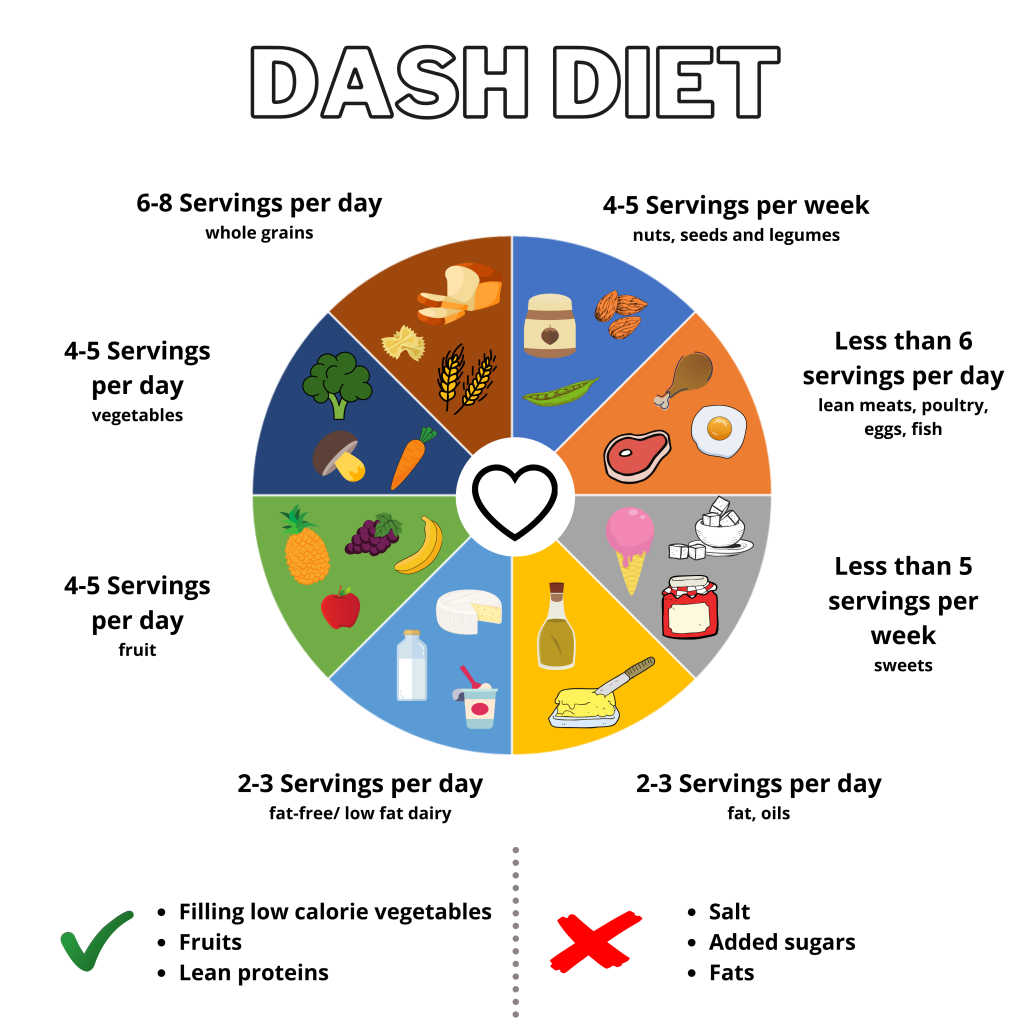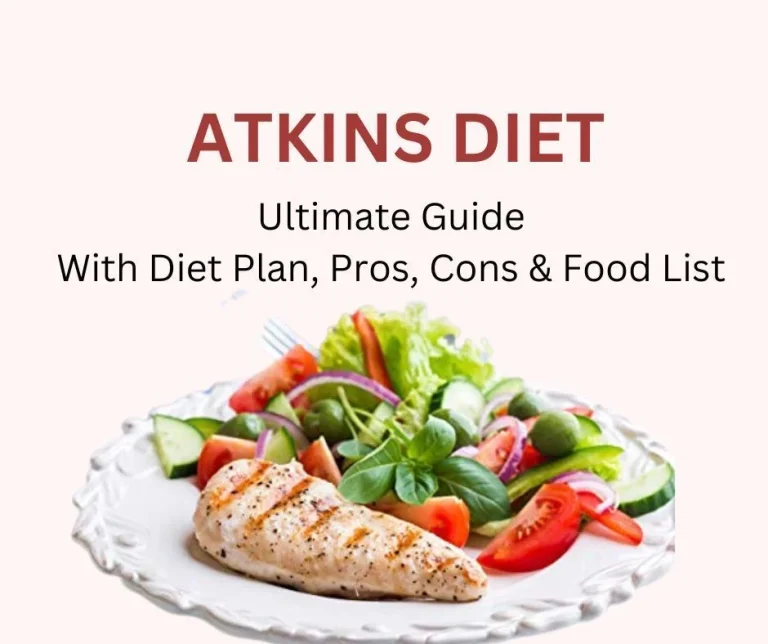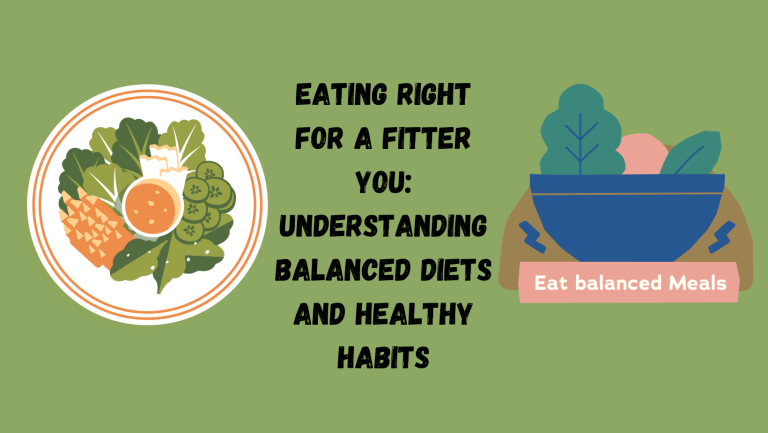The Dash diet stands for Dietary Approaches to Stop Hypertension. The diet was originally created with the aim of helping to reduce high blood pressure levels, while contributing to weight loss.
Currently, one third of the global population has high blood pressure. The consequences of this disease can be very varied, but are complicated if it coexists with another pathology (such as diabetes).
For this reason, it is essential to prevent and control its development, a goal that can be achieved if the DASH diet is implemented as a way of eating.
The principle of the Dash diet seeks to reduce sodium in the diet by consuming those foods that have a low sodium content, and increase those foods that are rich in potassium, magnesium and calcium, nutrients that help reduce blood pressure.
What is the DASH diet?
This food trend originated in the United States in the 90s as a measure to reduce high blood pressure and avoid the side effects of bad eating habits.
Although this way of eating is especially indicated for people with high blood pressure , it is a good alternative for leading a healthy and balanced lifestyle .
The DASH diet is based on reducing the consumption of certain foods ( salt , red meat, alcohol, sugary drinks and ultra-processed foods), as well as increasing the intake of fresh and unprocessed products (fruits, vegetables, whole grains, legumes, eggs, nuts, skimmed or semi-skimmed dairy products, fish and lean meat).
It is, therefore, a diet that includes foods rich in potassium, calcium and magnesium and that focuses on reducing the amount of daily salt .
It must be taken into account that there are two different ways to carry it out:
- On the one hand, the standard diet , in which you can consume up to 2,300 mg of salt daily.
- On the other hand, the low sodium diet in which only 1,500 mg is ingested. In the latter, it is important to remember to drink water as it helps eliminate excess sodium in the body.

Benefits of Dash Diet
The DASH diet is based on following a healthy and balanced diet. For this reason it has multiple health benefits :
- Helps reduce high blood pressure (main objective of the diet).
- Reduces the risk of suffering from cardiovascular diseases , as well as strokes.
- It is a diet with a high contribution of minerals such as calcium, potassium and magnesium, which helps strengthen bones.
- By reducing the amount of sodium consumed, bone health is improved.
- In addition, low salt consumption contributes to maintaining good kidney health and reducing the risk of kidney stones.
- As a consequence of weight loss, glucose metabolism is favored, preventing or controlling the development of diabetes.
- It allows you to improve cholesterol levels.
It must be taken into account that, for greater effectiveness , it is necessary to accompany the DASH diet with daily physical activity. It is advisable to exercise at least five times a week, for more than half an hour.

It is well known that the DASH diet can help lower blood pressure, minimize the risk of heart disease, and enhance general health. It encourages a well-rounded and balanced eating pattern, which is advantageous for anyone wishing to lead a healthier lifestyle as well as for those who have hypertension.
Choosing Your DASH: The Two Fantastic Types 🤔🍽️
Guess what? The DASH Diet comes in not one but two amazing versions: the Standard and the Lower Sodium DASH Diet. One’s like a regular superhero, and the other is like a superhero with extra powers! They both do wonders, but the lower sodium one is like a superhero suited up for fighting high blood pressure.
Standard DASH Diet:
- The DASH diet plan is outlined here.
- It suggests consuming up to 2,300 mg of sodium per day, which is the usual upper limit for sodium consumption in the US.
- Increasing the intake of nutrient-dense foods such as fruits, vegetables, whole grains, lean meats, nuts, seeds, and legumes is the main goal.
- The Standard DASH Diet is intended to lower the risk of heart disease and assist in preventing and managing excessive blood pressure.
Lower Sodium DASH Diet:
- This particular form of the DASH diet is intended for people who need to cut back on their salt consumption even further, particularly those who have hypertension or other medical problems that call for careful sodium management.
- The daily salt consumption is restricted to 1,500 mg or less. It is advised that people who are elderly, African American, or suffer from specific medical conditions that make them more sensitive to sodium take this reduced dosage of sodium.
- With more stringent salt restrictions, the Lower salt DASH Diet adheres to the same nutritional guidelines as the normal DASH diet.
5 Main Advantages of Dash Diet Plan 💪🥗
Are you ready for this? The DASH Diet isn’t just about looking cool; it’s about being cool from the inside out! It helps keep your blood pressure in check, takes care of your heart, and makes sure you’re getting all the right stuff in your tummy. Plus, it’s like your friendly guide to keeping your weight in check! The following are the DASH diet’s five benefits:
- Effective Blood Pressure Management: Preventing and managing high blood pressure, or hypertension, is the main goal of the DASH diet. Following the DASH diet can considerably lower blood pressure levels, both systolic and diastolic, according to numerous studies. Reducing the risk of heart disease and stroke requires lowering blood pressure.
- Heart Health: Heart-healthy Eating habits are encouraged by the DASH diet. It promotes a diet low in cholesterol, trans fats, and saturated fats and high in nutrient-dense foods such as fruits, vegetables, whole grains, and lean proteins. These dietary selections can lower the chance of developing cardiovascular conditions.
- Nutrition Balance: A balanced consumption of macro and micronutrients is emphasized in the DASH diet. It promotes eating a range of foods from every dietary group.
- Weight control: Although the DASH diet does not focus primarily on weight loss, it can help with healthy weight management due to its emphasis on whole, nutritious meals and portion control. It might be simpler for people to reach and stay at a healthy weight if they choose healthier foods and manage their portion sizes.
- Decreased Sodium Intake: One of the main goals of the DASH diet is to lower blood pressure in people who already have high blood pressure or are at risk of developing hypertension. Reducing sodium consumption can lower blood pressure and assist in avoiding fluid retention, which lowers the risk of heart-related problems.
Examples of DASH Foods 🍎🥕🥑
Time to explore the delicious world of DASH foods! From crunchy fruits to rainbow-like veggies, super grains, lean proteins, and the ultimate healthy fats, we’ve got a buffet of goodness here. These foods aren’t just yummy; they’re like your trusty sidekicks in keeping you strong and healthy. Here are a few examples of the same:

- Fruits: Include a diversity of fruits in your diet, including citrus fruits, apples, bananas, berries, melons, and oranges. These supply vital nutrients, vitamins, and fiber.
- Vegetables: Eat a variety of vibrant vegetables, such as tomatoes, sweet potatoes, bell peppers, broccoli, carrots, and leafy greens. They are abundant in minerals, vitamins, and antioxidants.
- Whole Grains: Avoid refined grains in favor of whole grains. Add items such as whole grain pasta, quinoa, brown rice, oats, and whole wheat bread. They offer minerals and fiber.
- Lean Proteins: Opt for lean protein sources such as fish, skinless chicken, tofu, tempeh, lean beef or pork cuts, beans, lentils, and legumes. These choices help you meet your recommended daily intake of protein and have less saturated fat.
- Nuts and Seeds: Boost your diet with unsalted almonds, walnuts, flaxseeds, and chia seeds. They are good providers of fiber, protein, and healthy fats.
- Healthy Fats: When cooking and making salad dressings, use healthy fats like avocado, canola, and olive oil. These fats are good for the heart since they are mono- and polyunsaturated.
- Legumes: Rich in fiber and plant-based protein are beans and legumes, including chickpeas, black beans, and lentils. They work well as main dish, salad, and soup elements.
- Herbs and Spices: Add flavors to your food by adding herbs and spices such as cinnamon, turmeric, oregano, garlic, and basil. These can improve the flavor of your food without using too much salt.
Keep in mind that the DASH diet encourages variety and balance in your diet. It’s about choosing sustainable, healthful options that promote blood pressure control and heart health rather than imposing severe limitations.
Who needs to follow the DASH diet? 🌍👩⚕️
If you’ve got high blood pressure, are worried about your heart, or just wanna rock a healthy lifestyle, you’re in! Even superheroes need to take care of themselves, right?
- People with High Blood Pressure: Those with high blood pressure respond particularly well to the DASH diet. It promotes eating foods including fruits, vegetables, healthy grains, lean meats, and low-fat dairy items that can help lower blood pressure.
- Those at Risk of Hypertension: Following the DASH diet can be a preventive step if you have a family history of high blood pressure or other risk factors including obesity, an unhealthy diet, or a sedentary lifestyle.
- Cardiovascular Disease: The DASH diet is appropriate for people with heart disease or those who want to lower their risk of developing cardiovascular issues because it places a strong emphasis on foods that are good for the heart.
- Diabetics: Because the DASH diet encourages balanced meals with limited carbohydrate intake, it can be modified for those who have diabetes. When used in conjunction with other diabetes care techniques, it can aid in blood sugar regulation.
- Those Seeking Weight Management: The DASH diet, with its focus on nutrient-dense foods, portion control, and a reduction in high-calorie, low-nutrient foods, can assist healthy weight management even though it is not primarily a weight loss diet.
- Individuals with a General Health Interest: The DASH diet can be used as a general guideline for a balanced and nutrient-rich diet that promotes overall health, even if you don’t have any particular health concerns.
DASH Diet and Diabetes: 🩺🍰
Oh, and did you know the DASH Diet is like a best friend for people with diabetes? It’s all about the right foods, the right portions, and keeping those sugar levels in check. It’s like a superhero team-up for a healthier you! Let’s know why is it so good for diabetic patients:
- The DASH diet places a strong emphasis on eating full, unprocessed foods such as fruits, vegetables, whole grains, lean meats, and low-fat dairy products. These foods can help control blood sugar levels since they often include less refined carbs and added sugars.
- Balanced Macronutrient Intake: The DASH diet encourages the consumption of healthy fats, proteins, and carbs in a proportion that is balanced. This balanced strategy can help reduce blood sugar spikes and crashes in those who have diabetes.
- Rich in Fiber Foods: Fruits, vegetables, and whole grains provide a good source of fiber in the diet. Fiber can help regulate blood sugar levels by slowing the absorption of sugar.
- Portion Control: In order to control blood sugar levels and calorie consumption, portion control is encouraged by the DASH diet. It discourages overindulging and encourages attentive eating.
- Decreased Sodium Intake: Although salt, or sodium, has no direct bearing on blood sugar regulation, it is crucial for cardiovascular health in general. Reducing sodium intake is advised by the DASH diet, which is especially advantageous for diabetics who are more likely to develop heart disease.
- Flexibility: Individual dietary demands and tastes can be catered to by tailoring the DASH diet to suit them. It enables customization according to an individual’s chosen diabetes care strategy.
However, it’s crucial that people with diabetes collaborate with a medical professional or registered dietitian to develop a customized meal plan that takes into consideration their unique dietary needs, medication, and blood sugar goals.
Disadvantages of Dash Diet👀🚫
The setbacks of dash diet are:
- Increased Grocery Costs: Compared to processed or convenience foods, buying fresh fruits, vegetables, lean meats, and whole grains might be more expensive. The DASH diet may cause some people to spend more on groceries.
- Time-consuming: Cooking from scratch with full ingredients could take longer than buying prepared or fast cuisine. Those with hectic schedules may find this difficult.
- Food Restrictions: The DASH diet restricts or limits a number of foods and substances, including processed foods high in salt, sugary snacks, and meals rich in saturated fats. This can be a drawback for those who adore certain foods.
- Initial Adjustment Period: Since people must become used to new eating patterns and flavor profiles, switching to the DASH diet may need an adjustment period.
- Low in “Fun” meals: The DASH diet may seem to some to be comparatively low in meals that are considered to be indulgent or “fun,” including desserts and highly processed snacks. For people who enjoy indulgences sometimes, this may make it difficult to follow the diet consistently over time.
- Particular Health Objectives: Although the DASH diet is great for controlling blood pressure and maintaining general health, it might not be designed with particular health objectives like treating certain medical problems or losing weight in mind. People who have certain health requirements might need to adjust the DASH diet.
7-Day DASH Diet Plan 🍽️📅
Alright, who’s ready for an eating adventure? We’ve got a plan for you—a whole week filled with delicious meals to keep you feeling like a superhero!
Day 1:
- Greek yogurt for breakfast, topped with almonds and berries.
- Lunch is a salad of grilled chicken and spinach dressed with a vinaigrette.
- Snack: Hummus-topped carrot and cucumber sticks.
- Steamed broccoli and baked salmon served with quinoa for dinner.
Day 2:
- Breakfast consists of oatmeal with sliced bananas and honey drizzled on top.
- Lunch consists of a whole wheat wrap with turkey and avocado and a side of mixed greens.
- Snack: Peanut butter on apple slices.
- Dinner is roasted Brussels sprouts on the side with lentil soup.
Day 3:
- Eggs scrambled with spinach and tomatoes for breakfast.
- Lunch is a quinoa salad topped with cucumbers, feta cheese, and chickpeas.
- Mixed berries for a snack.
- Dinner is asparagus and brown rice paired with grilled shrimp.
Day 4:
- Smoothie made with almond milk, banana, Greek yogurt, and spinach for breakfast.
- Lunch consists of mixed greens with tuna salad dressed with tahini and lemon.
- Snack: Almond butter on celery sticks.
- Supper is baked chicken breast paired with green beans and sweet potatoes.
Day 5:
- Breakfast consists of poached eggs and avocado over whole-grain bread.
- Quinoa and black bean bowl accompanied by guacamole and salsa for lunch.
- Snack: Cottage cheese paired with sliced peaches.
- Dinner is sautéed spinach and brown rice paired with broiled fish.
Day 6:
- Greek yogurt parfait for breakfast, topped with mixed berries and granola.
- Lunch consists of a balsamic-glazed tomato, fresh mozzarella, basil, and caprese salad.
- Snack: Tzatziki sauced baby carrots.
- Dinner is brown rice and stir-fried tofu with mixed vegetables.
Day 7:
- Breakfast consists of chia seeds, almond milk, and sliced almonds added to overnight oats.
- Brown rice with a stir-fried turkey and vegetables make up lunch.
- Mango slices as a snack.
- The supper will be roasted asparagus and quinoa along with grilled pork tenderloin.
Remember: 💡💪
- The DASH diet is a food trend created in order to prevent high blood pressure and help in weight loss.
- The benefits of this way of eating are multiple, including controlling the possible development of high blood pressure.
- For greater effectiveness of the diet, it is important to accompany it with daily physical activity.











Very interesting points you have observed, regards
for putting up.